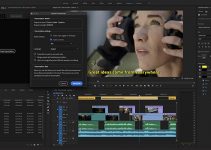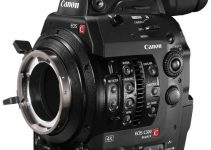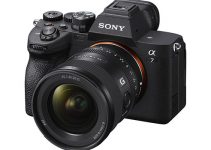Sirui and Vazen produce lenses for two very different markets. Sirui makes affordable anamorphic lenses for beginners and indie filmmakers who love that magical movie look but are on a budget. Vazen rolls out affordable anamorphic lenses for budding professionals who have a little extra cash in their pockets and need a cinema lens that can shoot 1.8x anamorphic.
Based in China, both lens manufacturers are new to game, but are building a huge following online. Traditionally, anamorphic lenses have been very expensive leaving a large segment of the video shooting population without access to that lovely 2.39:1 framing. Now, those prices are dropping rapidly and all the image squeezing goodness that those lenses have in store is finally within everyone’s grasp.
Let’s take a look at the offerings from Sirui and Vazen, and see how they compare with the help of Anamorphic on a Budget.
Anamorphic lenses were all the rage in the 1950s when they helped cinematographers and engineers finally solve the issue of filming and projecting in widescreen without having to replace all the existing equipment in every movie theater. Today, they’re very much still in use on professional filmset and extremely sought-after by indie filmmakers looking to reproduce that classic cinema look that we’ve all come to love.
But up until very recently, a single anamorphic lens could set you back well over a hundred thousand dollars. So indie filmmakers were stuck having to use every bizarre combination of filters and ‘taking lenses’ with anamorphic adapters that you could imagine to even get close to that cool cinema look.
Now all of that is a thing of the past since Sirui and Vazen are producing very affordable anamorphic lenses that, though they’re not Cooke or Angenieux quality, produce outstanding, squeezed images for us to project on the big screen, and immerse the audience in our fantastic content.
Size & Weight
Sirui lenses are by far smaller than the monstrous size of some of the Vazen glass, and the Sirui lenses are relatively uniform in their size and weight as well. Vazen’s body designs are wildly all over the place with a tiny 28mm lens in the same kit as their massive 65mm body.
Vazen constructs its lenses with an all metal design and cinema gears, making them more convenient for working on a shoot, but solo operators will find them a little heavy on the arms.
Lens Mount Options
Vazen’s anamorphic lenses are a bit of a mixed bag. They offer a 28mm, 40mm, 65mm, and an 85mm. But the Vazen 28, 40, and 65 are only offered for the MFT mount, and their 85mm comes in either EF or PL.
On the other hand, Sirui’s anamorphic lenses come in MFT, E, EF-M, X, and Z mounts. There is even a company in England (MFT Services) that can modify these lenses to work with RF, and L mounts for an additional fee.
There are definitely a lot more options for shooters from Sirui than there are from Vazen.
Sensor Coverage & Field of View
Since they’re main predominantly for MFT, Vazen’s lenses cover the width of an MFT sensor, which is smaller than S35 but it’s a 4:3 sensor allowing that 1.8x anamorphic squeeze to nicely de-squeeze into a 2.39:1 ultra-wide image.
Sirui’s lenses are designed to work on S35 sensors with several offering a slightly larger than S35 image circle.
On a MFT camera, Vazen’s lenses have a wider field of view due to their greater anamorphic squeeze, but on a S35 camera the Sirui’s produce an image that is .5x wider due to the MFT crop factor.
Squeeze, Breathing and Bokeh
All of these lenses have noticeable focus breathing, just as many high-end anamorphic lenses.
With Vazen, the larger lens design allows the focus mechanism to maintain a constant image squeeze while pulling focus, unlike the Sirui lenses.
While focused to infinity, the Sirui lenses squeeze a perfect 1.33x image, however, when focus is adjust to its minimum focus distance some Sirui lenses will project a 1.25x squeeze rather than 1.33x. That’s a pretty big issue since your shots will look distorted on close up.
Rich, smooth bokeh is what we’re all after in any lens purchase, and both Sirui and Vazen present an oval, anamorphic bokeh through the range, but only in the center of the image.
As you look out to the edges of the frame, on both cameras, you’ll see cutoffs and distortions in the oval patterns.
Flares
If flares are what you’re after with your anamorphic lenses, you’ve come to the right place with Vazen or Sirui. Your inner J.J. Abrams will be tickled with the easy flaring from both of these sets, with Sirui leaning more to a teal hue and Vazen a bit more purple.
Sharpness
The mark of any good lens (anamorphic or not) is it’s sharpness across the frame. Lots of lenses are sharp in the center, but looking to the corners you’ll see a lot of distortion, blurring, and chromatic aberration.
Out of the two, Sirui takes the cake with the best sharpness wide open, especially at close focus. A small amount of vignetting is visible with these lenses but that goes away as the lens is stopped down.
Vazen’s lenses suffer from less sharpness wide open, with the 40mm being the worst performer and the 65mm being the best. Sharpness improves as the lenses are stopped down, and unlike Sirui, the performance of Vazen’s lenses is consistent across the frame.
Price
Hold on to your hat because this is the bad news.
Sirui comes in at a reasonable price of $700-900 per lens, which is a great price even for a non-anamorphic lens. However, Vazen comes at a premium of $3,250/lens.
Keep in mind that your average anamorphic lens costs around $30,000/lens and the really high-end ones are only available to rent. That means that even at $3K, these prices would have been unbelievable just a short time ago.
So Who Wins?
For my money, Sirui is the clear winner here even with some of its flaws. It is available in more mounts, has a consistent size, quality, and color reproduction, and costs 3-4 times less than Vazen’s lenses.
The Vazen lenses tested in this video do not appear very sharp at all, some of the examples looked almost completely out of focus. They’re heavy, awkward, and draw more attention to the indie filmmaker without a permit.
If you’re looking to go anamorphic, Sirui is your best bet.
However, if your aim is only to shoot in a 2:39:1 framing, consider purchasing a camera that shoots at a higher resolution than 4k and cropping to meet your aspect ratio.
By cropping, you’ll capture a cleaner image, open your project up to a wider variety of lenses, and even if it means you’re purchasing a more expensive camera, you still save money over the cost of the specialty anamorphic glass.
[source: Anamorphic on a Budget]
B&H Order Links:
- Sirui 24mm f/2.8 Anamorphic 1.33x Lens (MFT Mount)
- Sirui 35mm f/1.8 Anamorphic 1.33x Lens (MFT Mount)
- Sirui 50mm f/1.8 Anamorphic 1.33x Lens (MFT Mount)
- Vazen 28mm T2.2 1.8x Anamorphic Lens
- Vazen 40mm T2 1.8x Anamorphic Lens
- Vazen 65mm T2 1.8x Anamorphic Lens (MFT)
Disclaimer: As an Amazon Associate partner and participant in B&H and Adorama Affiliate programmes, we earn a small comission from each purchase made through the affiliate links listed above at no additional cost to you.




